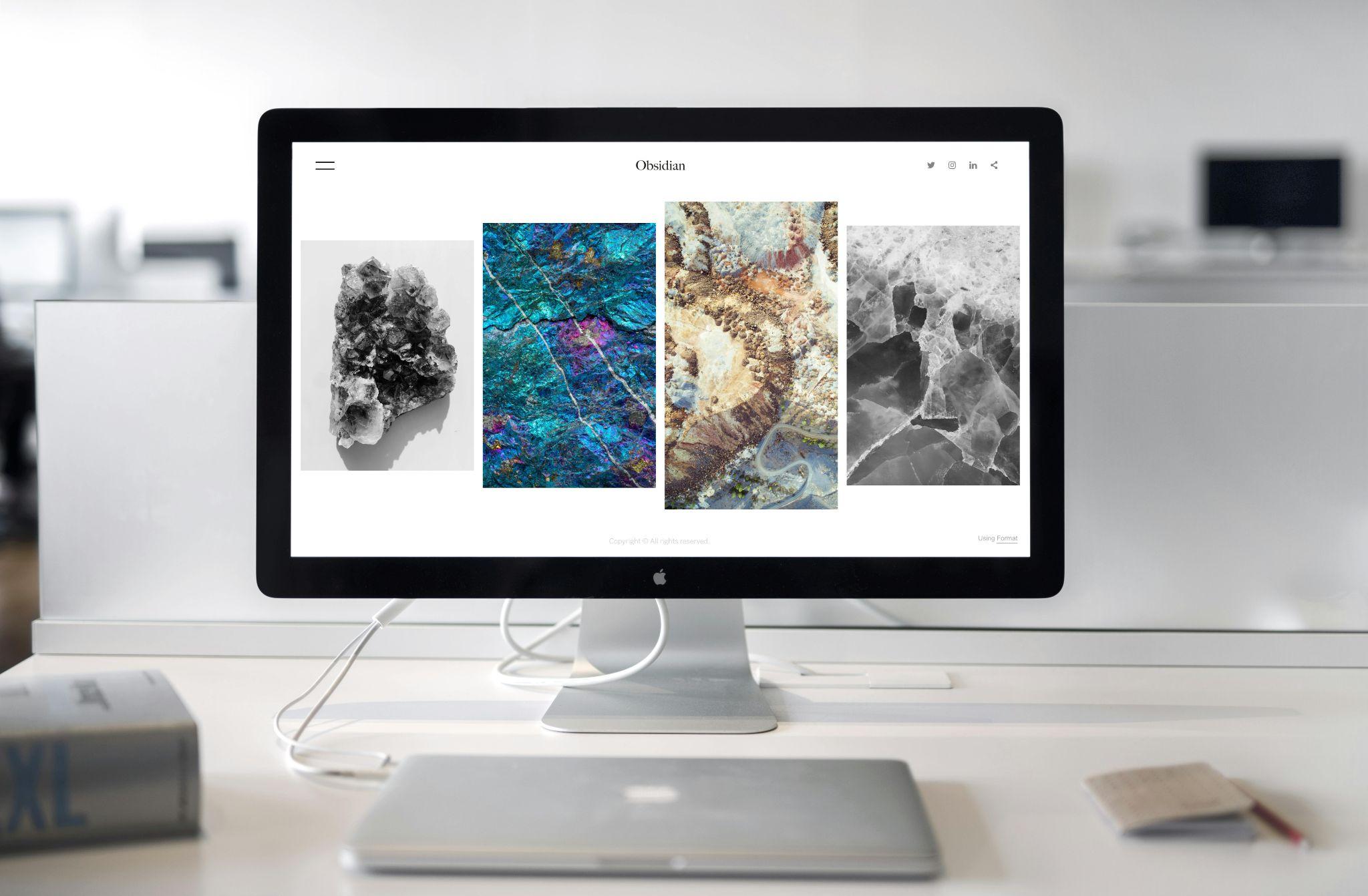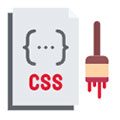Creating a portfolio website that captures attention and converts visitors into clients requires strategic thinking beyond visual aesthetics. A standout portfolio website combines compelling storytelling, intuitive user experience, and technical excellence to showcase your unique value proposition. The goal is to build a memorable digital presence that not only displays your work but actively communicates your professional brand and expertise to potential clients.
Define Your Personal Brand & Target Audience
Personal branding serves as the foundation for every design decision on your portfolio website. Without clear brand direction and audience understanding, even the most visually stunning sites fail to connect with the right prospects. Your brand identity should permeate every element, from color schemes and typography to content tone and project selection.
Crafting a unique value proposition
Your value proposition distills your professional identity into a clear, memorable statement that immediately communicates your worth to visitors. This tagline should answer three fundamental questions:
- Who you are – Your professional role and specialty area
- What you do – The specific services or solutions you provide
- Who it’s for – Your target client demographic and their needs
Effective value propositions combine personality with professionalism, avoiding generic phrases like “creative problem solver” in favor of specific, benefit-driven language that resonates with your ideal clients.
Identifying ideal clients and their needs
Client profiling involves creating detailed personas that guide your design and content choices. Understanding your audience’s pain points, goals, and decision-making processes helps you craft messaging that speaks directly to their needs.
| Role | Pain Points | Goals |
|---|---|---|
| Startup Founder | Limited budget, need professional credibility | Cost-effective branding that builds trust |
| Marketing Director | Tight deadlines, multiple stakeholders | Efficient collaboration and measurable results |
| Creative Agency | Client acquisition, standing out from competitors | Innovative designs that win new business |
Choose the Right Structure & Navigation
Website structure directly impacts user experience and conversion rates. The navigation system should guide visitors through your portfolio logically, creating a narrative flow that builds trust and demonstrates expertise. Consider your content volume, target audience preferences, and business objectives when selecting between layout approaches.
One-page layout pros and cons
Single-page portfolios offer streamlined storytelling opportunities with several key advantages:
- Simplicity – Visitors can scroll through your entire story without navigation decisions
- Mobile-friendly – Natural scrolling behavior works well on touch devices
- Narrative control – You dictate the exact sequence of information consumption
- Loading speed – Single page loads faster than multiple page requests
However, one-page designs present scaling challenges as your portfolio grows and may limit SEO optimization opportunities for multiple keyword targets.
Multi-page structure best practices
Multi-page portfolios provide flexibility and organization for comprehensive content presentation. Essential pages should include:
- Homepage – Clear value proposition and navigation to key sections
- Portfolio/Work – Organized project showcases with filtering options
- About – Personal story, credentials, and professional background
- Services – Detailed description of offerings and process
- Contact – Multiple communication pathways and location information
- Blog/Insights – Thought leadership content for SEO and expertise demonstration
Showcase Projects with Impact

Project presentation transforms simple work samples into compelling case studies that demonstrate problem-solving abilities and results delivery. Visual hierarchy and storytelling techniques help visitors understand not just what you created, but why it matters and how it achieved objectives.
Build compelling case studies
Case study structure should follow a logical progression that mirrors client decision-making processes:
- Context – Client background, industry challenges, and project scope
- Process – Your approach methodology, research insights, and strategic thinking
- Solution – Design decisions, implementation details, and creative rationale
- Results – Measurable outcomes, client feedback, and business impact
Each case study should include both visual documentation and written analysis that positions you as a strategic partner rather than just a service provider.
Visual presentation & hierarchy
Thumbnail selection and imagery quality significantly impact first impressions and user engagement. Essential visual elements include:
- High-resolution images – Crystal clear project screenshots and photographs
- Consistent aspect ratios – Uniform dimensions create professional grid layouts
- Contextual mockups – Show work in realistic usage environments
- Progressive disclosure – Tease full projects with compelling preview images
- Typography consistency – Maintain readable fonts and adequate contrast ratios
Design for Usability & Visual Appeal
User interface principles ensure your portfolio functions as effectively as it looks impressive. Balancing aesthetic appeal with practical usability creates positive experiences that encourage deeper exploration and contact conversion.
Clean typography and spacing
Typography choices communicate professionalism and enhance readability across devices:
- Font pairing – Combine complementary typefaces for hierarchy and personality
- Line spacing – Adequate leading improves reading comfort and comprehension
- Character limits – Optimal line lengths prevent eye strain and scanning fatigue
- Whitespace utilization – Strategic spacing creates visual breathing room and focus
Mobile-first and responsive layout
Responsive design ensures optimal experiences across all device categories and screen sizes:
- Flexible grids – Content adapts fluidly to various viewport dimensions
- Touch-friendly targets – Buttons and links sized appropriately for finger navigation
- Performance optimization – Compressed images and efficient code for mobile connections
- Testing protocols – Regular verification across multiple devices and browsers
According to Statista’s mobile traffic statistics, mobile devices account for over 54% of global website traffic, making responsive design absolutely essential for portfolio success.
Optimize Performance & Accessibility

Technical optimization affects both user experience and search engine visibility. Fast-loading, accessible websites rank higher in search results and create positive impressions that support business objectives.
| Tool | Primary Function | Key Metrics | Cost |
|---|---|---|---|
| Google PageSpeed Insights | Core Web Vitals analysis | LCP, FID, CLS scores | Free |
| GTmetrix | Comprehensive performance testing | Load time, page size, requests | Freemium |
| WebPageTest | Advanced waterfall analysis | TTFB, Speed Index, visual progress | Free |
Speed optimization techniques
Performance enhancement strategies directly impact user engagement and search rankings:
- Image compression – Reduce file sizes without sacrificing visual quality
- Lazy loading – Load images only when they enter the viewport
- Code minification – Remove unnecessary characters from CSS and JavaScript
- CDN implementation – Distribute content from geographically optimized servers
- Caching strategies – Store frequently accessed resources locally
Accessibility best practices
Inclusive design ensures your portfolio reaches the widest possible audience while demonstrating professional standards:
- Alt text descriptions – Provide meaningful image descriptions for screen readers
- Color contrast ratios – Maintain WCAG-compliant contrast between text and backgrounds
- Keyboard navigation – Enable full site functionality without mouse interaction
- Semantic HTML – Use proper heading hierarchy and structural markup
- Focus indicators – Clear visual feedback for keyboard and assistive technology users
Add Social Proof & Contact Pathways
Trust building elements and conversion optimization work together to transform portfolio visitors into paying clients. Social proof validates your expertise while clear contact pathways remove friction from the inquiry process.
Client testimonials and trust signals
Testimonial presentation formats that maximize credibility and impact include:
- Video testimonials – Authentic client endorsements with visual credibility
- Quote highlights – Extracted key phrases with client attribution and photos
- Case study integration – Embed client feedback within project narratives
- Logo displays – Showcase recognizable brand partnerships and collaborations
- Quantified results – Include specific metrics and measurable outcomes
Clear calls to action and contact options
Contact facilitation should offer multiple pathways that accommodate different communication preferences:
- Contact forms – Simple, secure inquiry submission with clear privacy policies
- Direct email links – Professional email addresses that build confidence
- Phone numbers – Local or toll-free options for immediate connection
- Social media profiles – Professional networking platforms and portfolio extensions
- Scheduling tools – Integrated calendar booking for consultation appointments
Choose the Right Tools & Hosting Options
Platform selection impacts both development timeline and long-term maintenance requirements. The right choice balances ease of use, customization flexibility, and total cost of ownership.
| Platform | Ease of Use | Design Flexibility | Monthly Cost | Best For |
|---|---|---|---|---|
| Squarespace | High | Medium | $12-18 | Designers seeking templates |
| WordPress.com | Medium | High | $4-25 | Content-heavy portfolios |
| Wix | High | Medium | $14-39 | Quick launches with drag-drop |
| GitHub Pages | Low | Very High | Free | Developer portfolios |
Website builders vs self-hosted setups
Platform comparison reveals distinct advantages for different user types and requirements. Website builders like Squarespace and Wix offer intuitive interfaces and integrated hosting but limit customization options. Self-hosted solutions provide complete control and flexibility while requiring technical knowledge and separate hosting arrangements.
Hosting & domain essentials
Infrastructure requirements for professional portfolio hosting include:
- SSL certificates – Secure data transmission and search engine trust signals
- Regular backups – Automated site protection against data loss
- CDN integration – Global content delivery for international audience reach
- Uptime monitoring – Continuous availability tracking and issue alerts
- Scalable resources – Bandwidth and storage that grows with traffic demands
Maintain & Update with Analytics
Continuous improvement ensures your portfolio remains effective and relevant as your business evolves. Regular analysis and updates keep content fresh while optimizing performance based on user behavior data.
Implementing analytics and user tracking
Analytics implementation provides insights into visitor behavior and conversion optimization opportunities:
- Google Analytics – Comprehensive traffic analysis and goal tracking
- Hotjar – Heatmaps and session recordings reveal user interaction patterns
- Search Console – Monitor search performance and technical issues
- Conversion tracking – Measure inquiry submissions and contact form completions
- A/B testing tools – Compare design variations and content approaches
Refreshing content and portfolio pieces
Update scheduling maintains portfolio relevance and search engine visibility:
- Quarterly project additions – Showcase recent work and expanding capabilities
- Annual content audit – Review messaging, testimonials, and service descriptions
- Monthly blog posts – Demonstrate expertise and improve SEO rankings
- Technology updates – Maintain security patches and performance optimizations
- Contact information verification – Ensure accuracy of phone numbers and addresses
Conclusion
A standout portfolio website successfully integrates personal branding, strategic design, compelling content, and technical excellence to create memorable user experiences that convert visitors into clients. The most effective portfolios balance visual impact with practical functionality, ensuring fast loading times, mobile responsiveness, and clear conversion pathways. By implementing comprehensive analytics tracking and maintaining regular content updates, your portfolio becomes a dynamic business tool that evolves with your professional growth and market demands. Remember that exceptional portfolio design extends beyond aesthetics to encompass user experience, accessibility standards, and performance optimization that collectively demonstrate your commitment to professional excellence.

